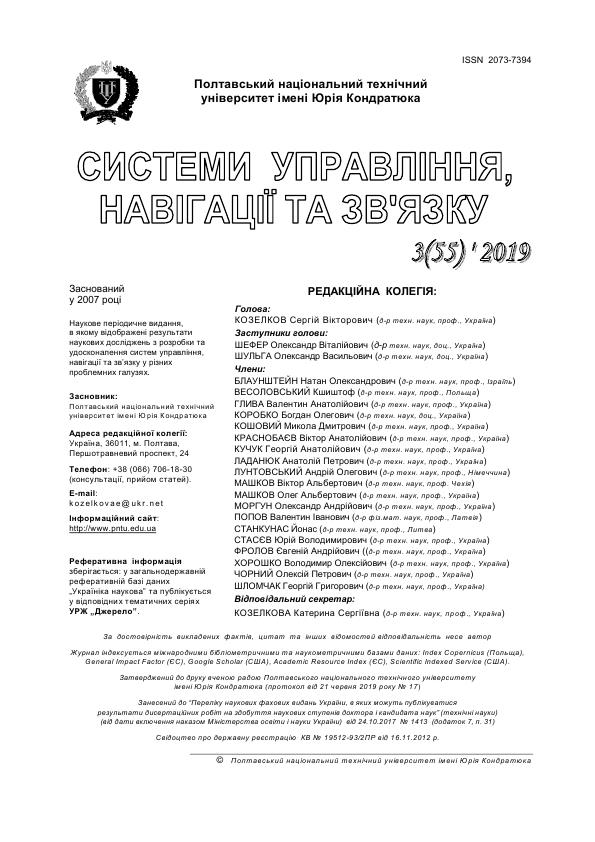THE USE OF MARKOV CHAINS TO DETERMINE THE CAPACITY OF MARKET SEGMENTS IN A DIGITAL TRANSFORMATION OF THE BEHAVIOR OF GENERATIONS OF CONSUMERS
DOI:
https://doi.org/10.26906/SUNZ.2019.3.089Keywords:
market capacity, market share, digital transformation of consumer behavior, generation Z, economic and mathematical modeling, forecast, demand, Markov chains, transition probability matrixAbstract
The problem of improving the methods of consumer research and the development of fundamentally new current and future forecasts of high-quality demand, taking into account consumer behavior and effective management in the conditions of the digital transformation of society, is urgent and completely unsolved. Analysis of mathematical models of forecasting demand and market capacity showed that the models are usually based on identifying common and stable patterns and relationships, analyzing trends and their extrapolation. The development of economic and mathematical models, taking into account the factors of the turbulent environment of the behavior of different generations of consumers, requires an appropriate mathematical apparatus, mechanisms for collecting statistical data and building appropriate models. Particular attention should be paid to the prediction of consumer behavior of the so-called "Generation Z", which is formed under the influence of the intensive development of digital technologies and has a number of features. In conditions when the majority of goods on the modern market are represented by several manufacturers, a large number of brands, and sales promotion by producers and sellers is abrupt, and the reaction of buyers to a particular product depends on many factors, the forecast of sales volumes can be based on a statistical assessment of changes in consumer preferences for products of individual species and manufacturers. The heuristic methods for predicting the market share of goods include a consumer assessment method using the Markov chain, which is based on the calculation of the transition matrix, whose elements are the probabilities of transition of predicted parameters from one state to another, from one brand to another. Economic-mathematical modeling of the capacity of market segments using Markov chains uses simple calculations, is easy to use, has the ability to track trends and causes of changes in the study of the dynamics of demand in different market segments.Downloads
References
Голованова М.А. Місткість ринку: методологічні підходи і практичні рекомендації : навч. посіб. / М. А. Голованова. – Х. : Нац. аерокосм. ун-т ім. М. Є. Жуковського «Харк. авіац. ін-т», 2014. – 168 с.
Golovanova M/ Using the economic and math-ematical models for determin-ing the market capacity / M..A. Golovanova, V.V. Lebedchenko // Сучасний стан наукових досліджень та технологій в промисловості. - 2018. - № 1 (3). – С. 71- 81.
Ферріс, Поль У. Маркетингові показники: Більше 50 показників, які важливо знати кожному керівнику / Ферріс Поль У., Бендл Нейл Т., Пфайфер Філіпп І., Рейбштейн Девід Дж. / Пер. з англ; За наук. ред.І.В.Тараненко. – Дніпропетровськ: Баланс Бізнес Букс, 2009. – 480 с/
Федько, В. П. Товарная политика организации (Стандарт третьего поколения) / В.П. Федько. – СПб.: Питер, 2018. – 608 с.
Логинова Ю.В. Моделирование поведения интернет-потребителей на основе сложной вероятностной модели / Ю.В. Логинова // Вестник Кемеровского Государственного университета. - Кемерово : КГУ. - 2014. - № 2-1(58). – С 247-255.
Lipstein, B. A mathematical model of consumer behavior / В. Lipstein // Journal of Marketing Research. - 1965. - № 2. - Р. 259-265.
Charles, ST A stochastic model of consumer behavior and optimal advertising / ST Charles // Management Science. - 1982. - № 9. - Р. 1 054-1064.
Beresnev, VL A mathematical model of market competition / VL Beresnev, VI Suslov // Journal of Applied and Industrial Mathematics. - 2010. - № 2. - Р. 147 - 157.
Семиглазов, А. М. Математическое моделирование рекламной кампании / А. М. Семиглазов, В. А. Семиглазов, К. И. Иванов // Доклады ТУСУРа. – 2010. – № 2. – С. 342 – 350.
Каширина, И. Б. Экономико-математическая модель прогнозирования спроса на образовательные услуги / И. Б. Каширина, В. Г. Мысник // Моделирование систем. – 2002. – № 2. – С. 46 – 53.
Patel, S. Models of consumer behavior / S. Patel, А. Schlijper. - P. 63. - Режим доступу: http: //www.smithinst.- ac.uk/Projects/ESGI49/ESGI49-UnileverConsumers/Report/Consumers.pdf.
Окландер М.А. Сучасні трансформації культурних чінніків поведінкі споживача / М.А. Окландер // Економічний вісник національного технічного університету України «Київський політехнічний інститут». - 2013. - № 10. - С. 386- 392 [Електронний ресурс]. - Режим доступу: http://nbuv.gov.ua/UJRN/evntukpi_2013_10_65.
Howe, Neil; Strauss, William. Generations: The History of America's Future, 1584 to 2069. New York: William Morrow & Company. – 1991. – 538 р.
Howe, Neil; Strauss, William The Fourth Turning: What the Cycles of History Tell Us About America's Next Rendezvous with Destiny. New York: Broadway Books. – 1997. – 400 р.
Шамис, Е. Теория поколений [Электронный ресурс] / Е. Шамис, А Антипов // Психология и бизнес. – Режим доступа. - https://psycho.ru/library/2581.
Державна служба статистики України : офіційний сайт [Електроний ресурс]. – Режим доступу : http://www.ukrstat.gov.ua/
Малетин, С.С. Особенности потребительского поведения поколения Z / С. С. Малетин // Russian Journal of Entrepreneurship. – 2017. - № 2. – С. 3348- 3360.
Амато, С. Что нужно знать о поколении Z. О мировоззрении, поведении и увлечениях постмиллениалов. Buro247. [Электронный ресурс] С Амато. - Режим доступа. - https://www.buro247. ru/lifestyle/obshcestvo/24-jul-2017-all-aboutgeneration-z.html.
Милош, И. Исследование: Сбербанк изучил поколение Z Доклад банка посвящен «центениалам». Sostav. [Электронный ресурс] / И. Милош. - Режим доступа. - http://www.sostav.ru/ publication/.
Портрет современных потребителей: На смену Миллениалам приходит Z. Sostav [Электронный ресурс]. - Режим доступа. - http://www.sostav.ru/publication/.
Френкель А.А. Прогнозирование производительности труда: методы и модели. - М.: Экономика, 1989. – 216 с.
Волков И.К., Зуев С.М., Цветкова Г.М. Случайные процессы. - М.: Изд-во МГТУ им. Н.Э. Баумана, 1999. – 448 с.
Вентцель Е.С., Овчаров А.А. Теория вероятностей. – М.: Знание, 1973. – 388 с.




